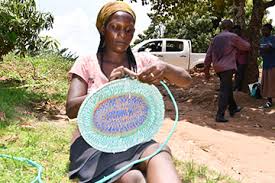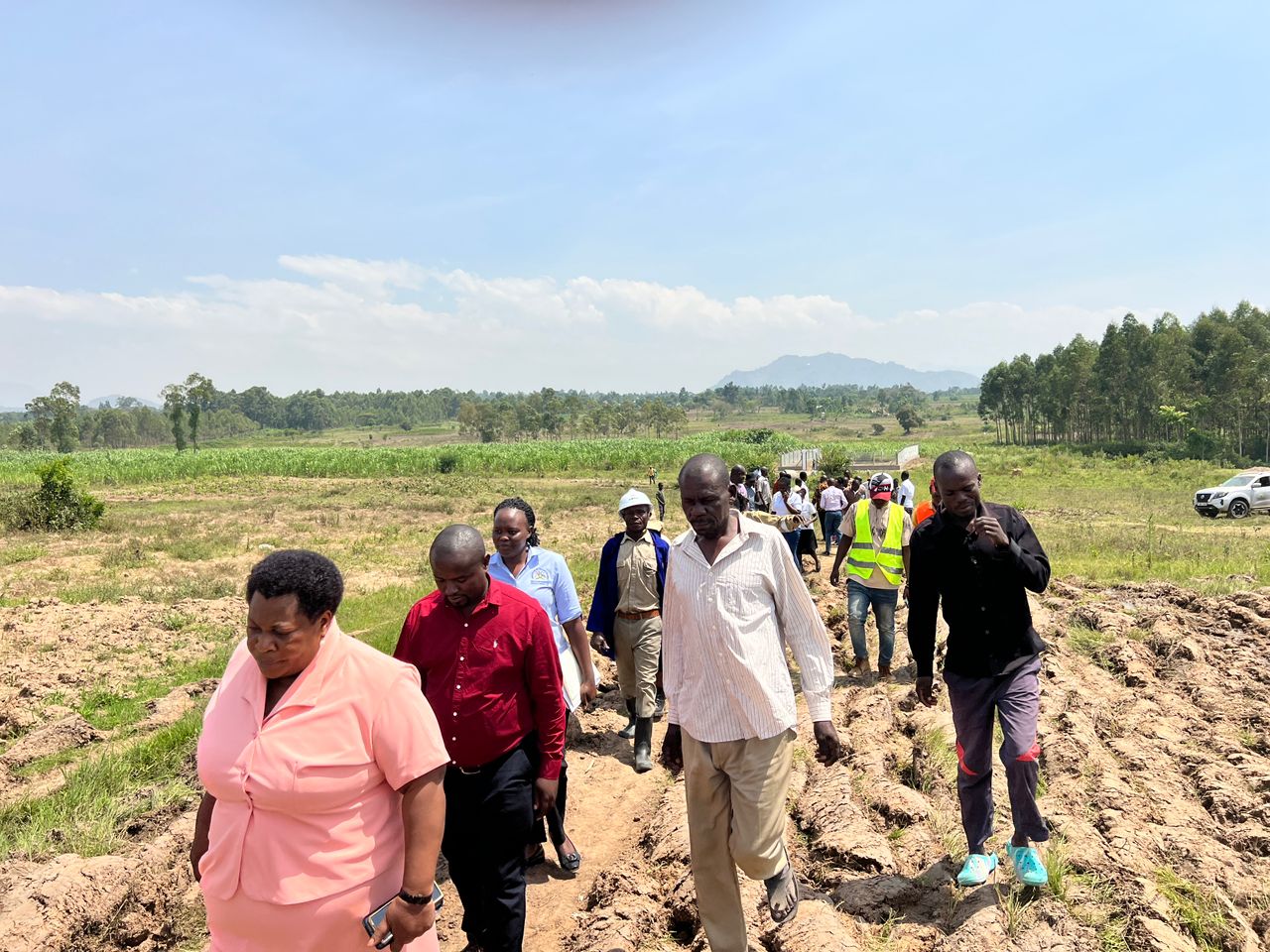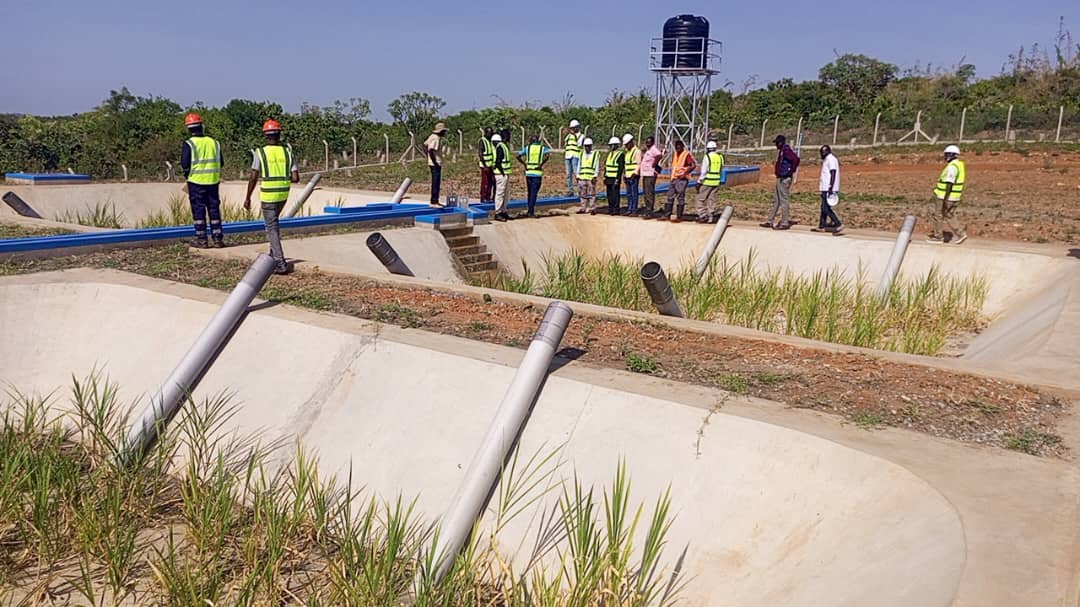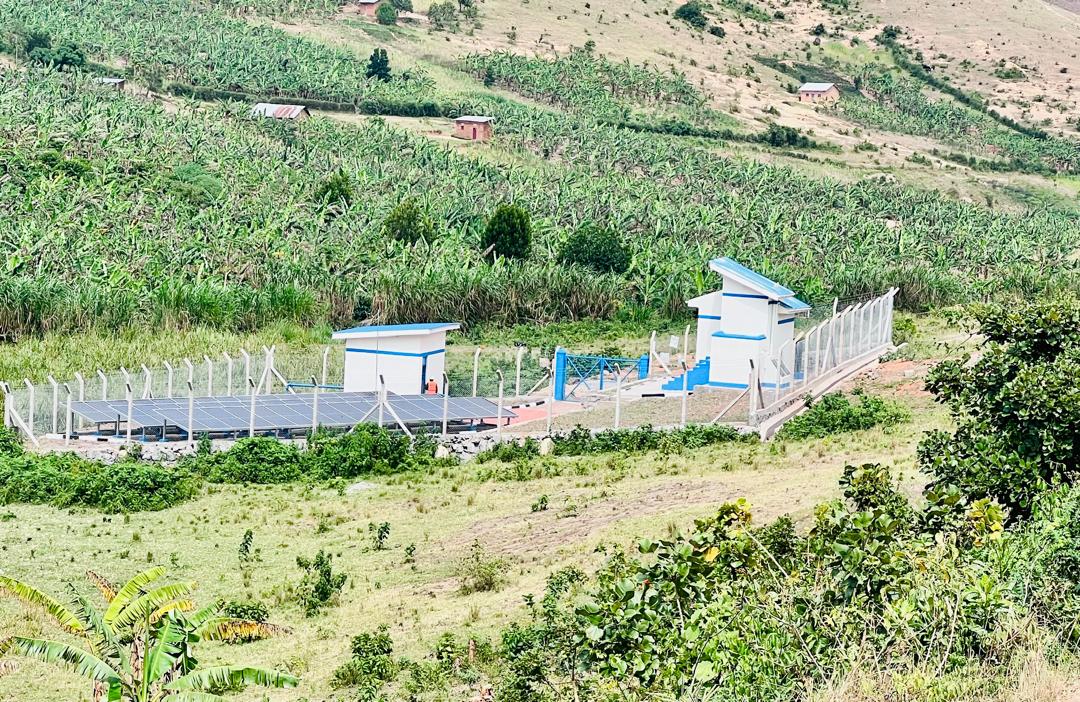
Nabimanya’s community in Sheema district counts the benefits of restoring wetlands.
Her hands are busy interlacing. Her attention equally appears to follow through a similar rhythm being created as her
hands, a locally made needle, polythene thread, and grass (harvested from the wetland) interconnect to craft a
beautifully knight basket. Her attention, however, is interrupted. The sound of the vehicle and simultaneously
greetings from a team of officials from the Ministry of Water and Environment and the technical team from Sheema
District suddenly bring her activity to a halt.
“You are welcome,” a 21-year-old Shildah Nabimanya, a resident of Nyakambu ward, Masheruka Town Council,
Sheema district, said with a smile as she ushers us to take seats. Shortly, she continues with her business. We are
visiting Nabimanya ─ a mother of two ─ at her family home, just to understand how she is progressing with the
alternative livelihood that she, together with other community members, received from the Government of Uganda,
under the Building Resilient Communities, Wetland Ecosystems and Associated Catchment Areas in Uganda
Project. The group received support under the no-regret program at the start of the project, funded with financial
support from the Government of Uganda (GoU), the Green Climate Fund (GCF), and the United Nations
Development Program (UNDP).
Nabimanya is a member of Masheruka Environmental Restore Wetlands and Disaster Monitoring Committee and
Cadres Association- a cooperative of 100 people founded in 2014 to support government conservation initiatives in
Sheema District. The group has ten youth (including Nabimanya), forty women and fifty men. In 2019, the group
received 25 beehives. This alternative livelihood would later become a landmark not only in ensuring the Nyakambu
wetland is free of encroachment, but also improve the livelihoods of community members whilst making them more
resilient to climate change impacts.
 Official Website of the Ministry of Water and Environment
Official Website of the Ministry of Water and Environment



